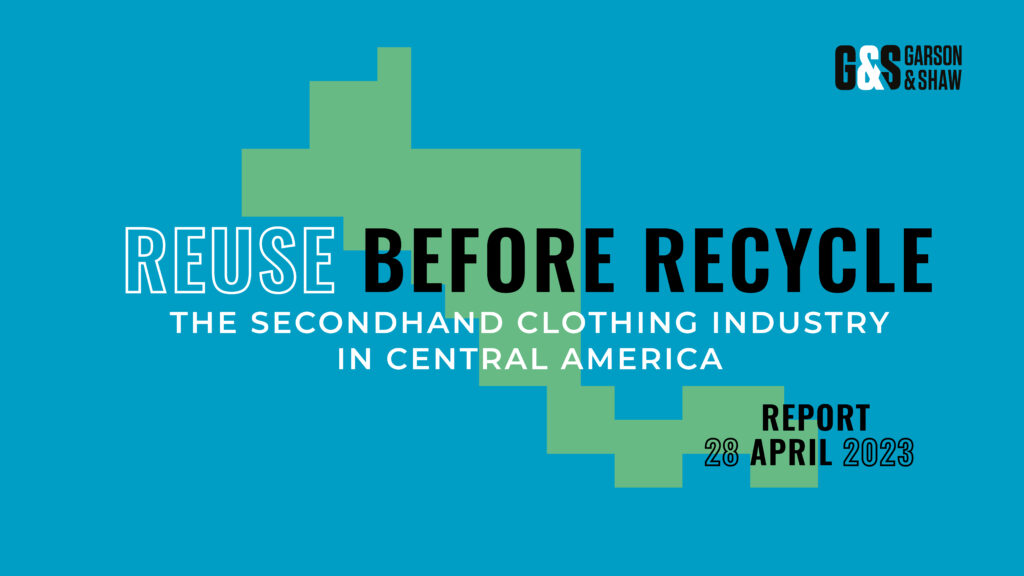
Executive Summary
The focus of this research paper is the potential long-term economic impact of the used clothing and footwear sector on the four Central American countries of Guatemala, Nicaragua, Honduras and El Salvador. The research shows that the secondhand clothing (SHC) trade is creating employment for hundreds of thousands of citizens while generating significant tax revenues to governments, and is likely to do so long into the future.
Central America is an increasingly influential player in the secondhand clothes industry, with the vast majority of exports to Central and South America coming from the United States. Imports of secondhand clothes to the region are driven by consumer demand. The majority of citizens in the four countries we reviewed are living on relatively low wages, with clothing making up a small proportion of their outgoings. Buying secondhand clothes relieves household budgets and provides choice for poorer households. At the same time, demand for secondhand clothing spans the income scale, finding customers among the upper and middle classes as well as those on lower wages.
Over the ten years to 2021, the nominal value of imports of secondhand clothes to the four countries has grown by $274million, with Nicaragua experiencing nearly 280% growth during the period. This, along with corresponding economic growth, reflects the demand for secondhand clothing in the region and demonstrates the long-term viability and stability of the trade.
Our report estimates that by the early 2040s, the used clothing sector will sustain more than three million jobs in the four Central American countries of Guatemala, Nicaragua, El Salvador, and Honduras and bring in nearly $200million in annual tax revenues. The secondhand clothes industry will remain a continuing source of relatively well-paid employment, tax revenues and GDP as long as governments and policymakers ensure there is a competitive operating environment conducive to the sector’s long-term growth.
This paper argues that national governments will have to shape policies that boost secondhand clothes businesses in Central American countries, rather than advancing protectionist industrial policies that are unlikely to benefit workers and consumers. Secondhand clothes generate competition that helps to incentivise technological innovation throughout the textile production sector.
The report acknowledges that much of the official data available on secondhand clothes in Guatemala, Nicaragua, El Salvador, and Honduras is patchy at best. The large and medium-sized secondhand businesses operating in the area are demonstrating significant leadership in terms of their social and environmental impact, which is highly commendable.
As in other similar markets, however, many of the jobs are still carried out in the informal economy. Moreover, the social benefits, while evident on the ground in communities, are harder to quantify. We argue that more research is required in this area to understand better the end beneficiaries of the secondhand clothes trade. This will enable more concrete social policies to be advanced, aimed at helping to bring more workers into the formal economy and expand social security and labour rights, in particular for women and young people.
This report is being launched in Costa Rica. Costa Rica has a secondhand clothes industry that is worth US$125 million per annum. Used clothing imports from the United States and Canada to Costa Rica have also grown significantly over the last twenty years. secondhand clothes are becoming increasingly popular with middle-class consumers in Costa Rica who more often demand eco-friendly products. This is a trend we’ve seen replicated in the four countries we studied in this report. Across Central and South America, the used clothing industry is positioning itself as one of the key sectors of the future.
